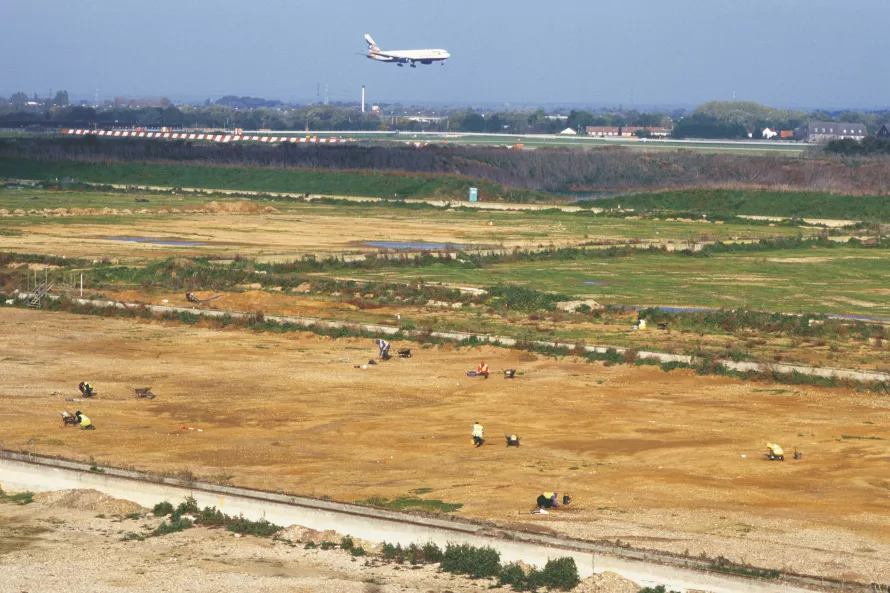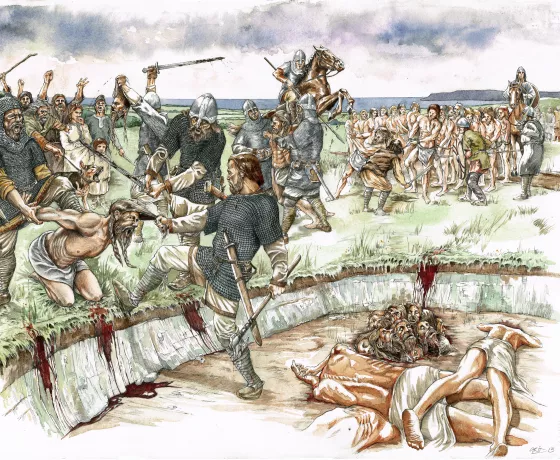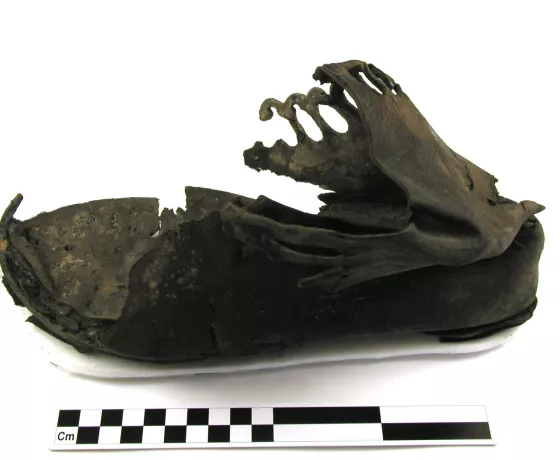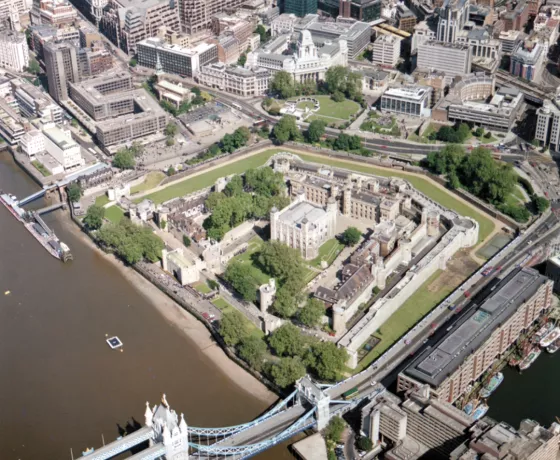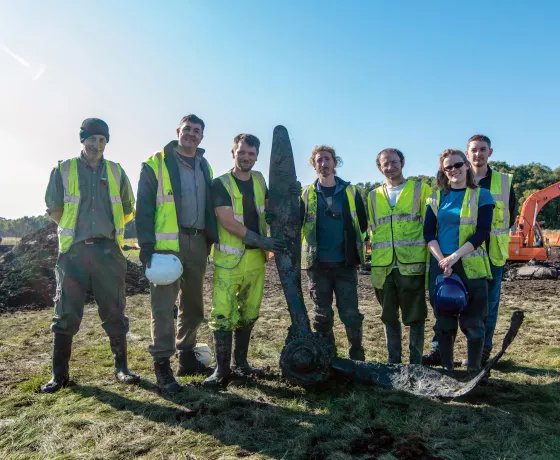March highlights took us all the way to the Mesolithic with the first confirmed cremation from the period (watch this space for more news about that!), then to Heathrow T5 and Stansted when Oxford Archaeology formed the first archaeology joint venture in Britain together with Wessex Archaeology, Framework Archaeology. A 6,000 years old elm leaf then showed how archaeology today is important to understand the climate change challenges we are facing. And then we visited Stonea Camp, the lowets hillfort in Britain which could be the first place to enter history books in the British Isles, thanks to a citation by Roman historian Tacitus.
A special highlight was celebrating International Women's Day with OA's women and archaeologists, listening to their experiences and what drives them every day in their work. A special thank you to all the colleagues who shared what it means to be a woman archaeologist.
The oldest cremation... so far!
In 2014, OA's Cambridge office was tasked with excavating a number of sites along the Chelmsford Effluent Pipeline. As a number of Bronze Age and Anglo-Saxon features were found, the team were not particularly surprised when they uncovered a pit with remains from a cremation. It was assumed that the bone fragments and charcoal would date to the Bronze Age, when cremation was common.
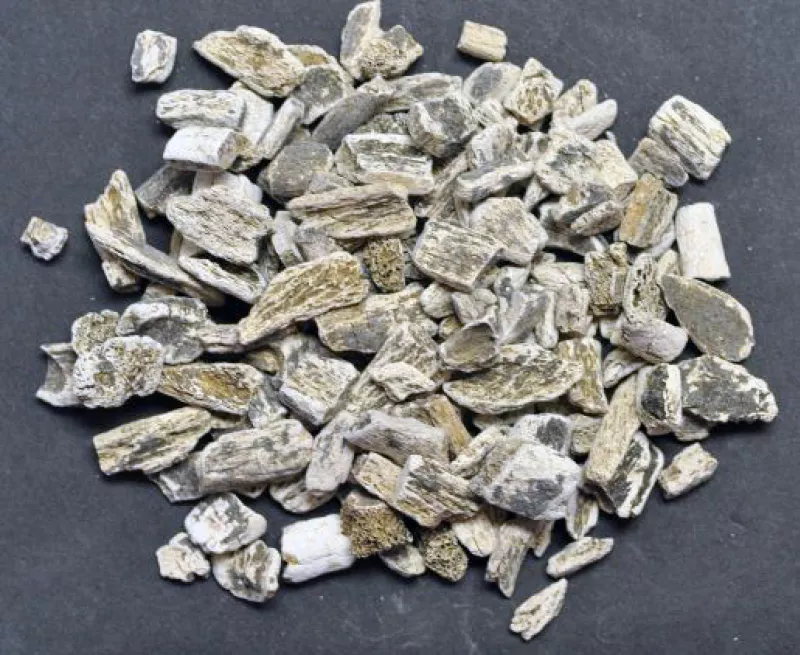
When a sample of the remains was sent for radiocarbon dating, the results left our colleagues Nick and Louise scratching their heads. The cremation was dated to 5,600 BC, during the Mesolithic or the period before farming and a more settled lifestyle were adopted by humans in Britain. You can read more in the article Nick Gilmour and Louise Loe published in Mesolithic Miscellany.
Why is this find so special? To set the scene: Mesolithic human remains have only been found at 20 sites in Britain, so a very limited record. The majority of these come from caves used as burial grounds. And even within this very small pool of finds, this is exceptional because it is the first and, to date, only confirmed cremation from the Mesolithic in Britain. In fact, the results from radiocarbon dating where so surprising that they were re-run just to make sure!
What does this find mean? First and foremost, that more radiocarbon dating should be done on cremations. It is likely that other cremation remains found and attributed to other periods, like the Bronze Age, would date to the Mesolithic once sampled.
Secondly, that thanks to development-led archaeology, like the project that led to the discovery of these remains, so many new pieces of information are being uncovered to reconstruct and understand Britain's past. In the future it is likely that other Mesolithic cremations will be found, teaching us more about the people who lived in Britain back then.
Framework Archaeology, Britain's first archaeology joint venture
1998 saw the formation of what, we think, was the first ever joint venture in British commercial archaeology: Oxford Archaeology linked up with colleagues at Wessex Archaeology to form Framework Archaeology – and the rest, as they say, is history! Well, maybe not. However, this coming together of two of the largest archaeological contractors in the UK did prove to be truly significant in the history of commercial archaeology.
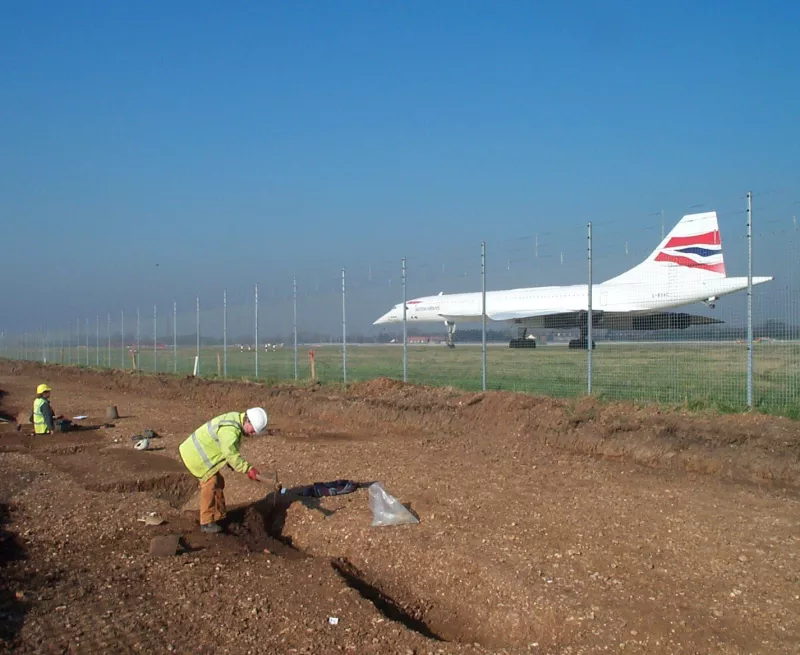
Framework Archaeology undertook archaeological works for BAA who, at the time, operated Heathrow and Stansted Airports, amongst others. It was committed to a particular archaeological philosophy, developed by BAA's archaeological consultants, Gill Andrews and John Barrett. This was concerned with understanding how people inhabited past landscapes: archaeology as a study of people rather than deposits or objects.
Framework Archaeology also developed innovative technological solutions to facilitate the rapid feedback of information to site teams, allowing a truly iterative approach to be adopted.
Large scale excavations quickly followed at Heathrow (first at Perry Oaks and then during the construction of Terminal 5) and at Stansted. Smaller-scale work was undertaken at Southampton, Gatwick and Edinburgh Airports.
It’s fair to say that Framework Archaeology had a huge impact on the way developer-funded archaeology was conducted at the time, and since. But it also had a real impact on the hundreds of archaeologists who were involved in its excavations, many of whom remain active throughout British archaeology today.
A 6,000 years old elm leaf from Windy Harbour
This leaf, although fragile, looks like it could have fallen from the branch last autumn, so it’s mind blowing to realise that it’s around 6000 years old. The elm tree from which it budded would have thrived in the vast and largely untouched oak and elm forests that then covered much of Britain.
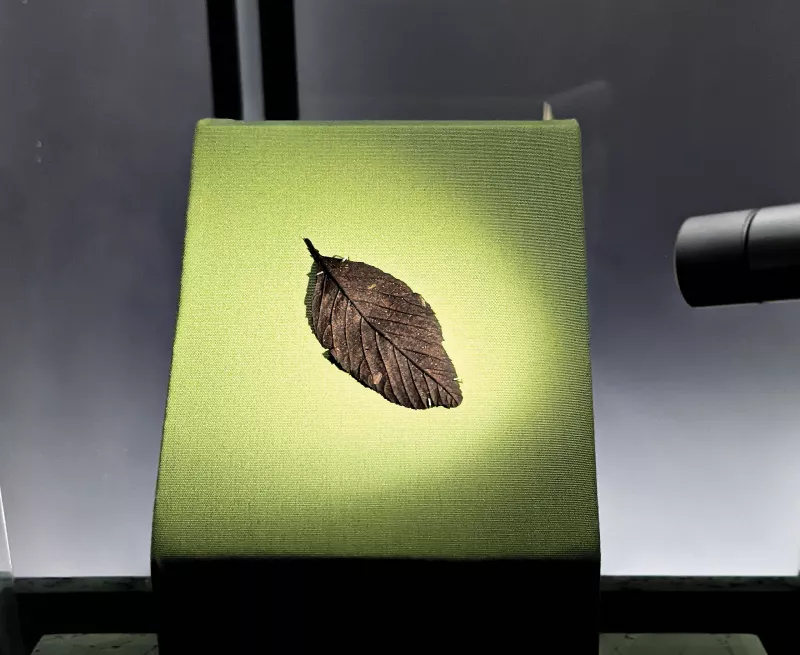
Within a few human generations, though, things would be very different. Disease ravaged the prehistoric elm population, decimating its ranks to the point that it could never recover. Humans too cleared great swathes of land for agriculture and the construction of earth, stone, and timber monuments. For this was the dawn of the Neolithic, a time of great social, cultural, ecological, and economic change, as hunter-gatherer lifestyles gave way to farming ones.
The leaf was found in fen peats, near to Poulton-le-Fylde, Lancashire, in advance of the construction of National Highways’ A585 Windy Harbour to Skippool road improvement scheme. It was associated with quantities of early Neolithic Carinated Bowl ware pottery, fragments of Langdale stone axe, worked flint tools and of charcoal. These items and materials seem to have been jettisoned into the fen by Lancashire’s earliest farmers, perhaps during votive performance.
The leaf had its moment of fame at the British Museum’s The World of Stonehenge exhibition (2022), where it was displayed, juxtaposed, against a wall of Neolithic stone axeheads, and was even mentioned by the artist Grayson Perry in his keynote speech.
Stonea Camp, Britain's lowest hillfort
Stonea Camp is Britain’s lowest lying Iron Age fort (2m above sea level or 7.5m OD). It is a Scheduled Monument of National (International) importance.
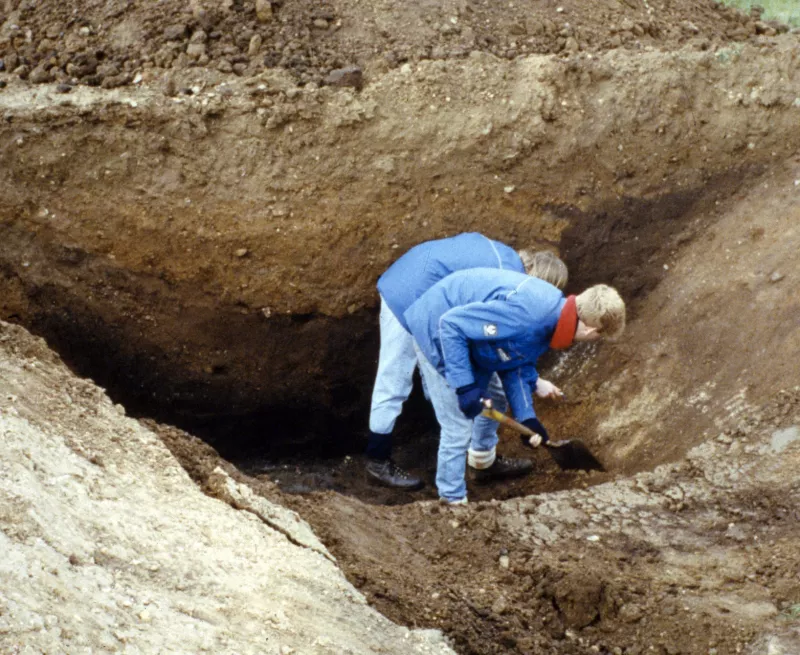
Built by the Iceni perhaps around 150 BC, it is one of the most significant Prehistoric monuments in the Fens and one of only three hillforts surviving to this day in Cambridgeshire.
Archaeological excavations at the site have demonstrated that the site has been inhabited since the Stone Age, with the Iron Age fort being the last and most visible feature. Other archaeological remains include a Bronze Age Barrow immediately to the north of the fort.
The site is the purported location of a battle between the Iceni and Romans (recorded by Tacitus) and skeletons with sword cuts have been recovered in the limited excavations on the site. This site would have been of some importance, as shows by staters with Cunobelin's name on them, and might have been visited by Boudicca….
CAMARC, whom OA took over in 2007, were involved in all the modern investigations at Stonea. This includes excavations and reinstatement of earthworks in 1990-1992, erecting display boards, and hosting events like open days and school visits, an important part of our work to help people connect to the history of their surroundings.
#OASheDigs to celebrate International Women's Day
Other posts in this collection
Read the latest posts celebrating our 50th year in archaeology.

